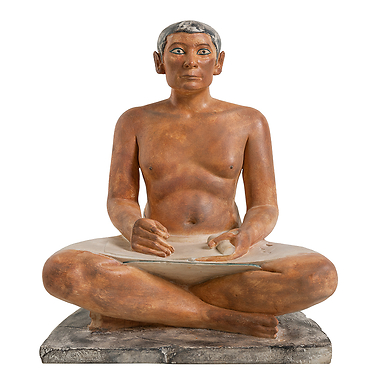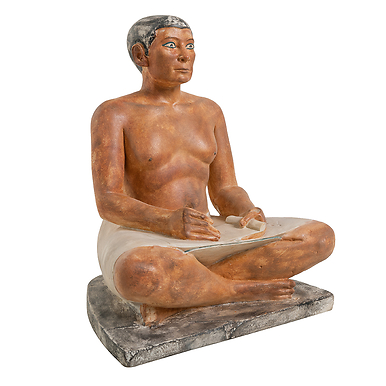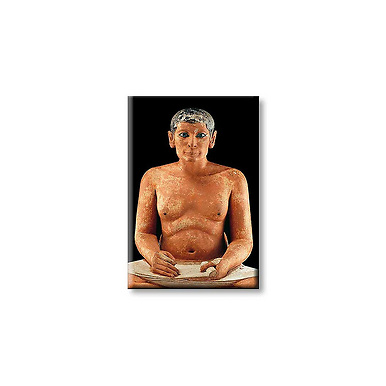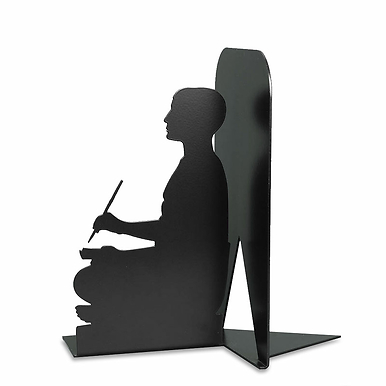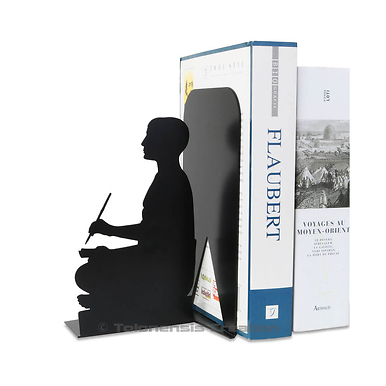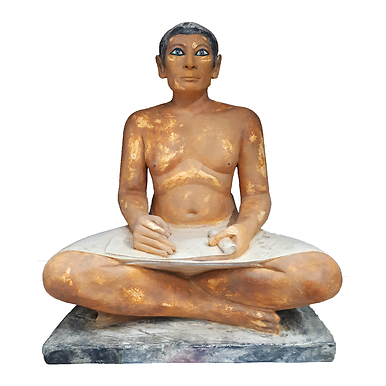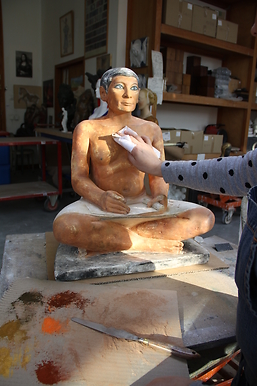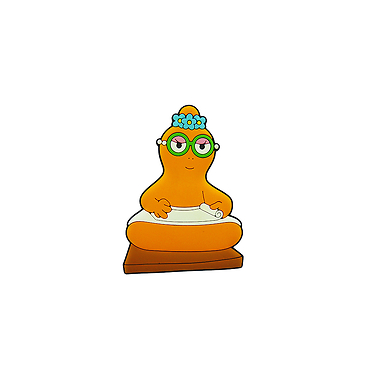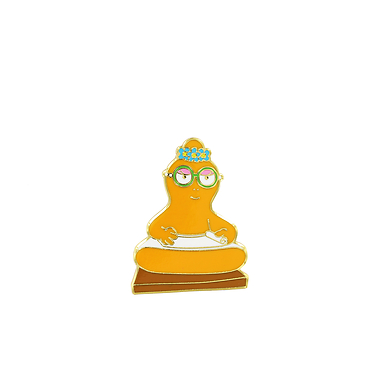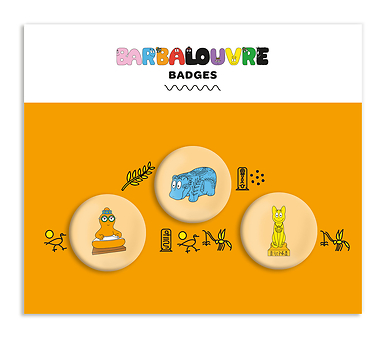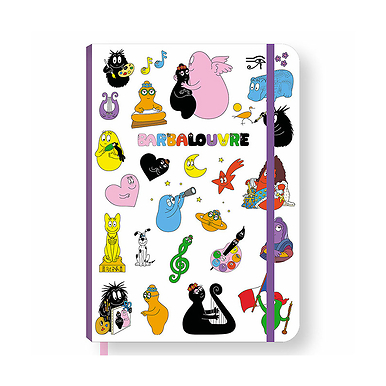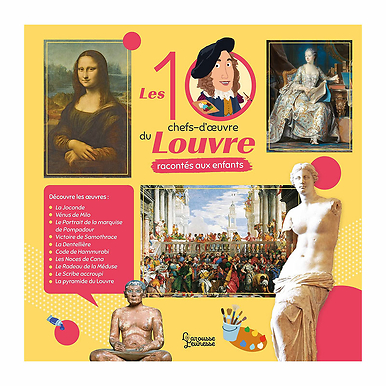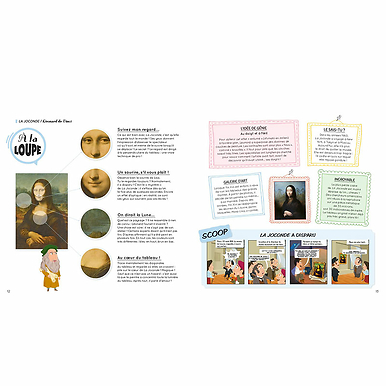A fascinating eye
His clear rock crystal eyes seem to possess all the world's knowledge. Discovered by French archaeologist Auguste Mariette in 1850 in a tomb in Saqqara, this statue made of painted limestone, alabaster, rock crystal and copper features a scribe sitting cross legged. In his very fine hands is a papyrus, on which he is writing from right to left.
Acquired and conserved by the Louvre since 1854, The Seated Scribe is one of the masterpieces of Ancient Egyptian art. The man's identity is unknown: the hieroglyphic inscription bearing his name is likely to have been lost during excavation. However, it can be said that he represented an important character of his time, since his representation as a scribe places him among the social elite.

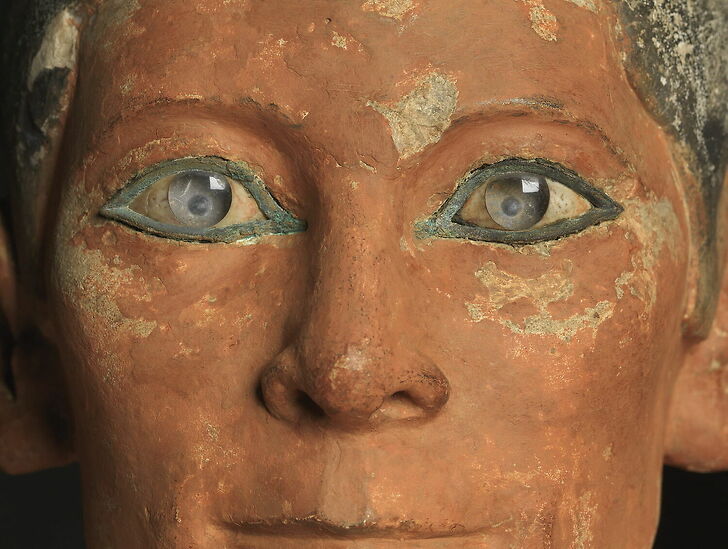
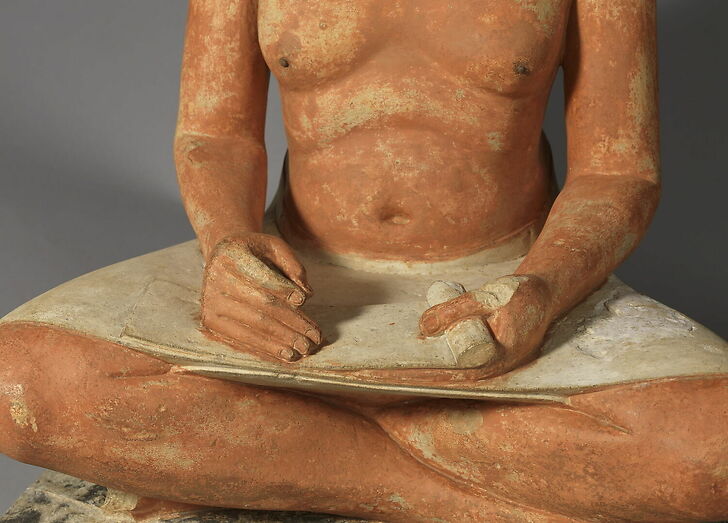
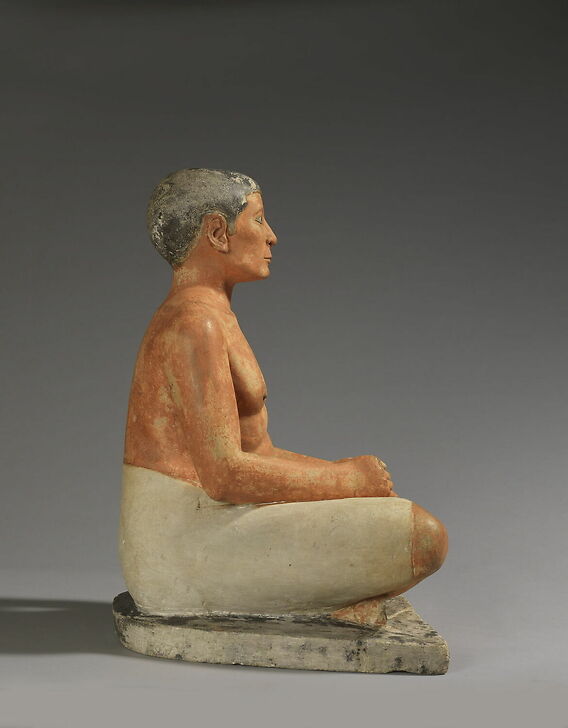
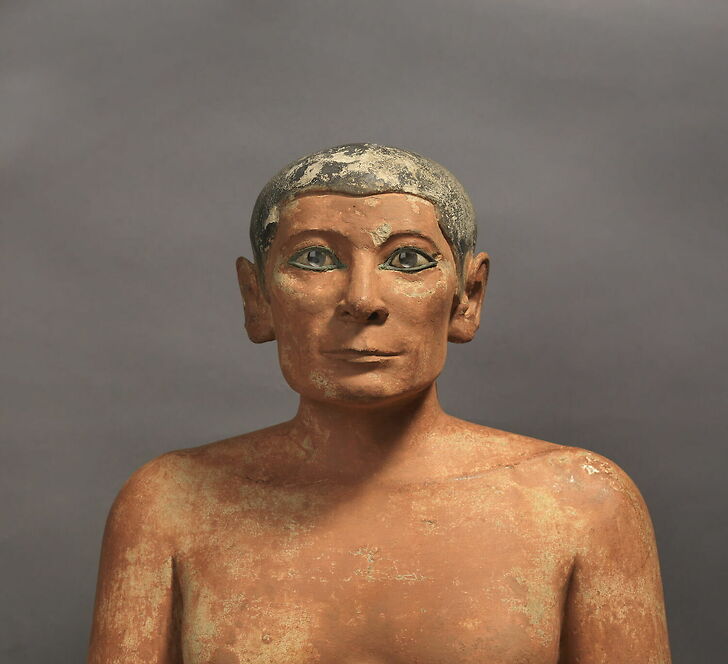
Sons of Pharaohs were often portrayed in the guise of a scribe, and it is highly possible that the Louvre example was the son of an Egyptian sovereign of the 4th or 5th dynasty. The quality and realism of the sculpture seem to confirm this hypothesis.
Did you know?
What captivates the observer most of all is the fascinating intensity of the statue's eyes. Using an optical illusion, its eyes seem to follow the viewer. Incrusted with rock crystal and encircled in copper, they reflect light to give the illusion of an animated pupil. During restoration in 1999, these secrets revealed the remarkable skill of the artist, whose ingenuity gave the eyes an almost real intensity.

